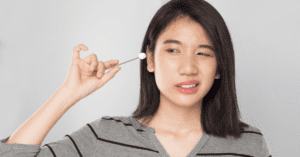Purchasing a hearing aid is, for many people, a significant financial decision — and one that comes with many questions. Patients often wonder what kind of hearing aid is best for their personal hearing loss, where they should go to be correctly fit with hearing aid(s), how is it going to look in their ear, and what kind of features it has, just to name a few. With so many factors, it is rarely a simple decision – let’s take a deeper look at some things to consider before choosing a hearing aid.
Choosing A Provider
Audiologists are professionals that specialize in the diagnosis and management of hearing loss, and therefore are the ideal provider for the fitting of hearing aids. Like any provider you may see, it is important to find an audiologist that listens and prioritizes your specific needs. A good place to start may be checking your insurance coverage for hearing aids. If you have coverage, you can likely find an audiologist in your network! If not, you can find great providers in your area. Other options such as big box retailers are available, which come with their own pros (potentially less expensive) and cons (they may not have the highest level of expertise). Over-the-counter (OTC) hearing aids are also becoming available and would not require a provider at all – however, the details surrounding how this will work are still emerging, so at this time we are going to discuss some of the more traditional options available.
Price
Often the first thing that comes to mind when someone brings up hearing aids is the price – namely how expensive they are. While to some extent this is true, it is important to understand what is included in the cost. For example, hearing aid services are typically not covered by insurance, and are often bundled into the initial cost of the device. In other cases the cost of the hearing aids may be less expensive, but follow up appointments are not included (audiologists called this an “unbundled” pricing model). These are important questions to ask your provider. Other factors that influence the cost of the hearing aid is how advanced the technology is – in other words, higher end or more “premium” technology is usually equipped with more features, whereas less expensive aids are more basic and may have poorer sound quality. However, independent research on performance differences between technology levels is dubious at best. While there are benefits to premium level technology, everyone’s listening environments are different and spending more doesn’t always equate to hearing better.
Sound Quality
Sound quality is perhaps the most important factor to consider prior to choosing a hearing aid. The general goal of hearing aids is the same – to improve speech understanding and clarity; however, different manufacturers have different sound processing algorithms. Some are better for hearing in quiet settings, whereas others might offer more robust amplification and have better ability to reduce ambient noise. Based on your preferences and hearing needs, you and your provider will be able to select an option that is best suited for you. Just know, not every hearing aid is created equal in terms of sound quality!
Style
Hearing aids come in different styles – some fit completely in the canal of the ear, while others have a component that sits behind the ear and a small wire that connects with a tiny speaker in the ear canal. The configuration of your hearing loss, the size of your ear canal, and aesthetic preference are determining factors in what style(s) you may be a candidate for. There are pros and cons of different styles. For example, the smaller ones that sit fully in the canal may offer “invisibility,” but for most people they’re not appropriate for age-related hearing loss, tending to produce a boomy sound quality with too much bass. Behind the ear styles typically have more capabilities in terms of rechargeability and bluetooth options, as well as being able to fit a wide range of hearing loss configurations.
Battery Vs. Rechargeable
The option for traditional batteries versus rechargeable batteries is completely based on patient preference. Most manufacturers have rechargeable hearing aid options, and most patients prefer them. Typically, styles that sit behind the ear have the option to be rechargeable as well as certain custom hearing aids that sit fully in the canal. This is becoming a more popular option, as it reduces the inconvenience of purchasing batteries and having to change them frequently. On the other hand, those who travel often without consistent access to power or would prefer to not have to be reliant on a charger may opt for disposable battery options.
Bluetooth Compatibility And Hearing Aid Apps
Bluetooth compatibility allows hearing aids to be paired to a smart device (i.e iPhone, Android, iPad) to either control certain hearing aid settings through an app and/or to stream phone calls and media. For people with hearing loss, this can be an added convenience as it would negate the need to take your hearing aids out to put different headphones in. Additionally, the ability to stream phone calls allows the benefit of hearing through both ears instead of just one, which can be helpful in terms of clarity. Bluetooth compatibility is also a useful for individuals interested in streaming sound therapy (i.e. for tinnitus masking)
Most hearing aid manufacturers now have their own smartphone apps which can be paired with hearing aids, allowing individuals to have some control over the settings to make adjustments, such as volume control or to toggle between programs set by the audiologist for different listening situations. Certain apps also have built-in sound therapy, which is a useful tool for individuals with tinnitus.
Color
Hearing aids come in many different colors – for some individuals the goal may be to match your skin or hair tone, while for others you may want a pop of color to match their glasses or show off your new aids! Whatever your goal is, speak to your audiologist and find the option that best suits your needs.
With so many factors to consider, choosing a hearing aid can seem like a daunting task. But armed with the right information, you can make an informed decision that will best suit your needs, and improve your quality of life. If you have further questions and would like to discuss them with an audiologist, use the link in this article to schedule a free consultation with a member of our team at Treble Health.



















